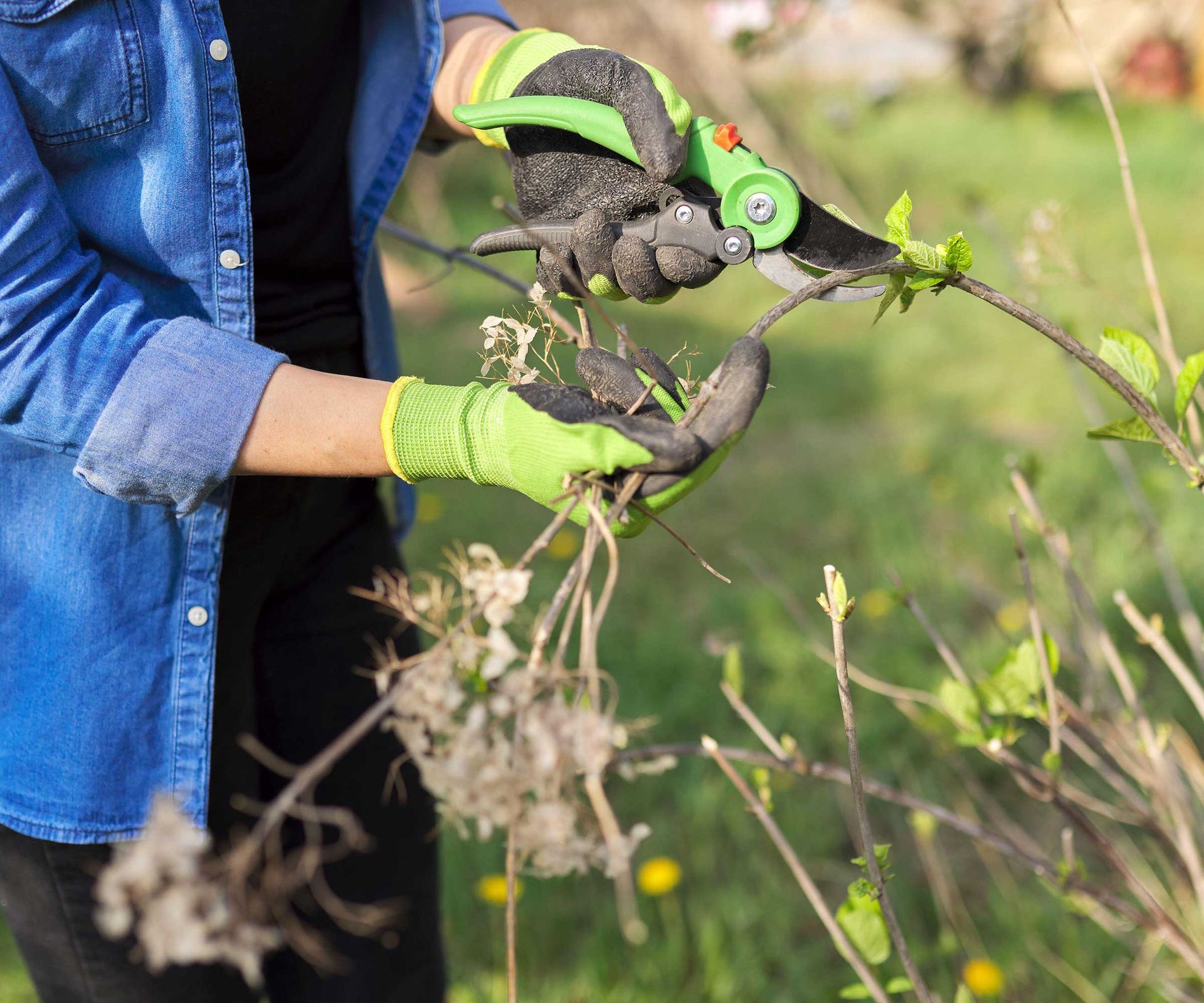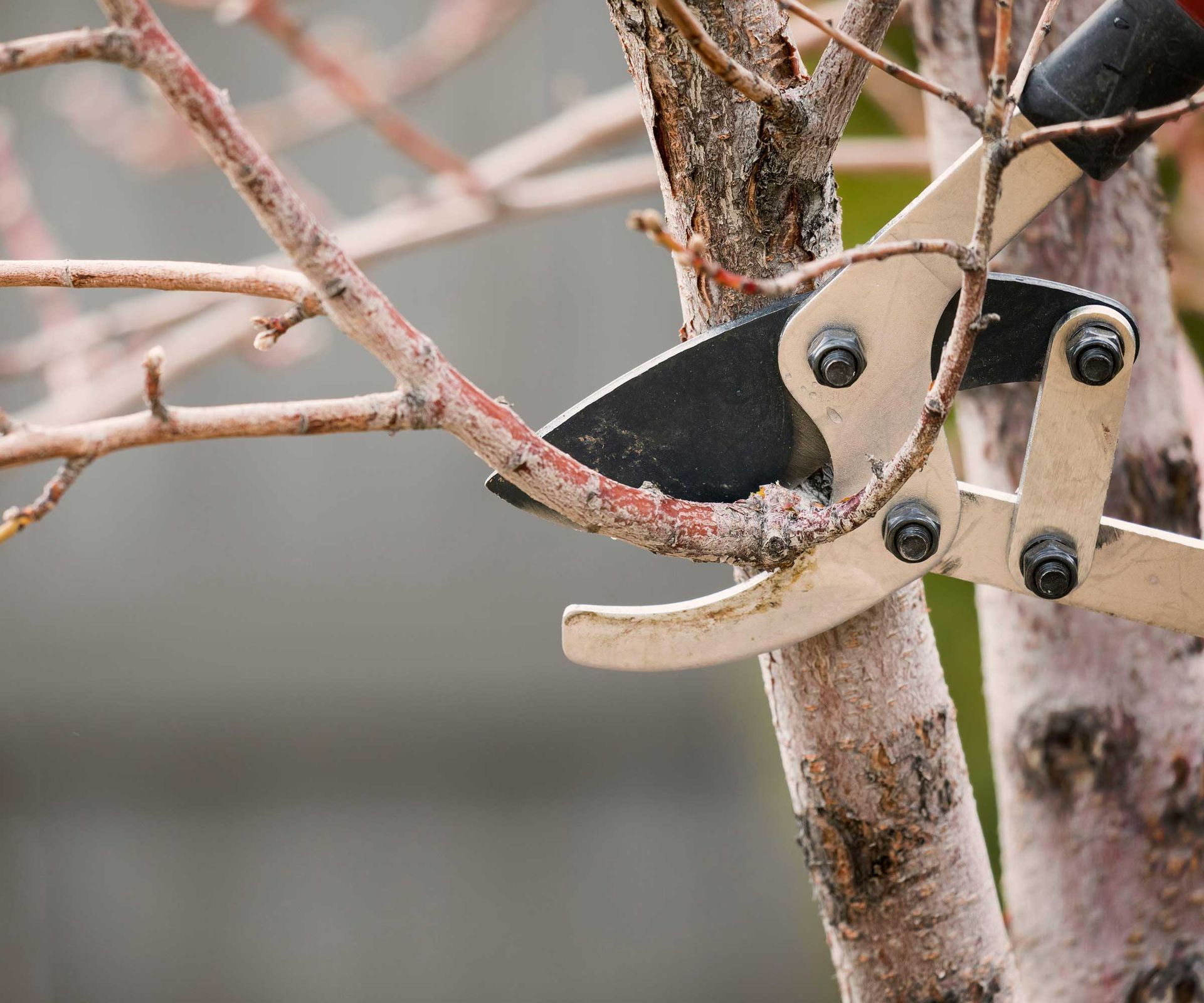This simple 1/3 pruning rule is easy to follow – and can save your shrubs and trees from disaster
The experts share their insights on this popular guideline that encourages successful snipping
- (opens in new tab)
- (opens in new tab)
- (opens in new tab)
- Sign up to our newsletter Newsletter


The 1/3 pruning rule is a useful guideline when it comes to giving established shrubs and small trees a trim. The notion is that no more than one-third of healthy growth should be removed at one time – whether that's removing one-out-of-three older stems completely, or cutting back each stem or branch by a third.
With the right approach, pruning is beneficial for lots of reasons – it keeps your deciduous and evergreen shrubs' and trees' shapes and sizes in check, encourages fresh growth, and helps maintain an open structure so light and air can flow through. But, with loppers or pruners in hand, it's easy to get carried away with this outdoor task.
Abiding by the rule of thirds avoids removing too much. But why is it important, and does it always apply? I spoke to gardening experts who shared their insights on the matter.

This rule can be applied to hydrangeas and many other shrubs and trees
What happens if you cut back more than 1/3 of your tree or shrub?
'Pruning more than 1/3 of the entire plant can have unpredictable consequences,' says Jennifer Green, a botanist and writer for the gardening blog Positive Bloom (opens in new tab). 'Sometimes, the plant can fall into a state of shock, slow down its growth, and have a rather difficult time recovering, if it manages to do that at all. At other times, plants may start growing excessively, producing lateral shoots all over the place, which may give them a shaggy appearance, requiring more additional pruning in the long run.
'In any case, excessive pruning will weaken your trees and shrubs over the course of time, which is why it’s generally not recommended.'
Ned Cromack, a UK-based arborist and Founder of The Bristol Tree Medic (opens in new tab), agrees. 'Pruning little and often is much better than taking large amounts off a tree,' he says, adding that 1/3 should be the absolute maximum amount removed at one time. 'Pruning creates wounds which open up the possibilities of pests and diseases, which sometimes lead to the death of a tree. It also removes leaves, leaving the tree with less energy-gathering potential.'
What's more, Ned explains how overzealous pruning encourages epicormic growth on trees. These are weak shoots that grow in response to stress, and are very prone to breakage.

Excessive pruning can weaken a tree

Drew has a Level 3 Horticulture qualification and is a former professional gardener. He has worked in several gardens in the UK, including Hidcote Manor Garden, Hanbury Hall, and the kitchen garden at Soho Farmhouse, and has a wealth of knowledge in horticulture – pruning included.
If you need to drastically reduce the size of a shrub or tree, it's often best to look at it as a long-term project, cutting off no more than a third at one time and giving it plenty of time to recover between pruning sessions. 'There may be times when major rejuvenation pruning involves taking more than one-third, but that should only be done if you know that type of shrub responds well to such major pruning,' says Drew Swainston.
The 1/3 pruning rule helps promote plant health as it allows plants to gradually adjust to being pruned, says Lina Cowley from TrimmedRoots.com (opens in new tab). It also helps maintain the overall structure of the tree or shrub so that it stays aesthetically pleasing in your backyard landscape, she adds.

The 1/3 rule helps to maintain healthy, well-shaped plants
Does the 1/3 rule apply to all ornamental trees and shrubs?
'The 1/3 pruning rule is a general guideline, but it may not always be applicable to all species of trees and shrubs,' says Stacie Krljanovic, a Head Groundkeeper and advisor at Patio Productions (opens in new tab).
'Some species are more tolerant of heavy pruning, while others are more sensitive and require more careful and gradual pruning. It's best to research the specific species of the tree or shrub and consider factors such as its growth rate, maturity, and overall health.'
For instance, Ned Cromack explains how some trees, such as laurels and certain cypresses, can tolerate a harder prune. Birches, on the other hand, need a more delicate approach, as do walnuts, he adds. Some trees are simply less proficient at healing.
Pruning at the right time is also important, he continues – some trees are better pruned in winter, others in summer. It's often best to consult an arborist and ask them to carry out the work – for the safety of both you and your tree.
Of course, having the right tools is essential, too – whether that's bypass pruners, anvil ones (such as these ones from Amazon (opens in new tab)), loppers, or a pruning saw.
Does the 1/3 rule apply to fruit trees?
The 1/3 rule can often be applied when pruning fruit trees and shrubs, says grow-your-own expert Drew Swainston.
Stick to a maximum of one-third for small fruit trees, and also certain soft fruit, he says. 'This includes blackcurrant bushes, where you remove up to a third of the oldest stems each year. It also applies to red and white currants and gooseberries, among others, where you shorten branches by a quarter-to-a-third as well as spur pruning side shoots.'
The garden was always a big part of Holly's life growing up, as was the surrounding New Forest where she lived. Her appreciation for the great outdoors has only grown since then; over the years, she's been an allotment keeper, a professional gardener, and a botanical illustrator. Having worked for Gardeningetc.com for two years, Holly now writes about plants and outdoor living for Homes & Gardens.
-
-
 Robert Pattinson just bought a Spanish Colonial-style home – with an interior designer past
Robert Pattinson just bought a Spanish Colonial-style home – with an interior designer past'The Batman's' Robert Pattinson and Suki Waterhouse purchased the Jeff Lewis-designed Hollywood Hills estate for $5.3 million
By Megan Slack • Published
-
 7 expert-approved methods to remove candle wax from carpet
7 expert-approved methods to remove candle wax from carpetCleaning professionals share their tips on how to remove candle wax from carpet
By Millie Hurst • Published

